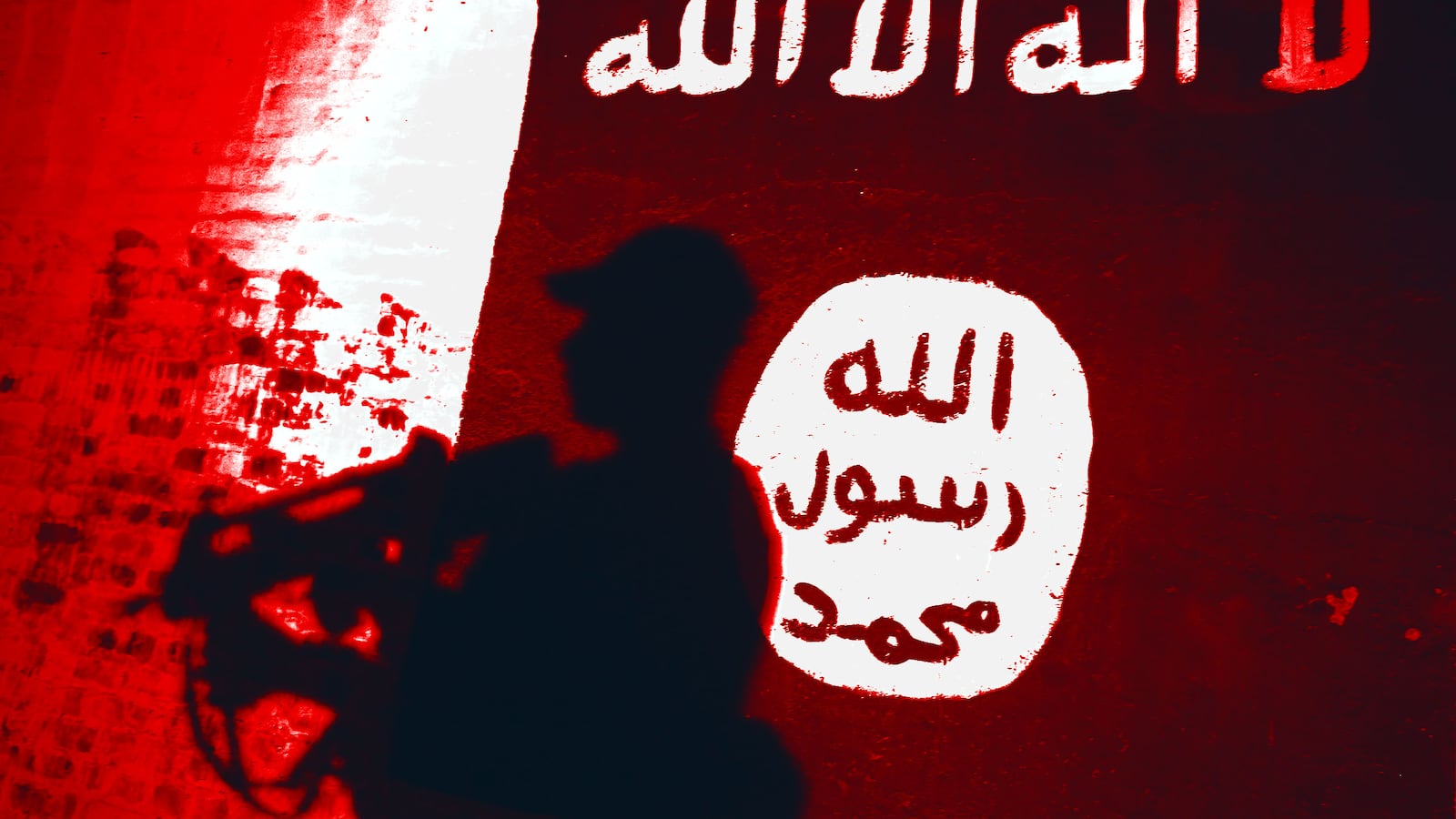On a roundabout in west Mosul, the biggest city to become part of the so-called Islamic State, the jihadists erected a large screen. On it, they would project videos showing gruesome acts of violence. After ISIS had taken the city, they purged it of anyone they thought would oppose their rule. To strike fear into the rest of the inhabitants, they made sure they knew about the killings that were taking place at mass graves outside town.
The group gained notoriety worldwide for cultivating its brutal propaganda online. But because it denied the people living in its self-proclaimed caliphate access to the internet, disseminating videos of beheadings or mass shootings had to be done the old way in Mosul.
“You could also buy them on DVDs in the neighborhood," says Walid Hassan, a resident of west Mosul, who regularly passed by the roundabout.
ISIS gained in force in Iraq when former Prime Minister Nouri al-Maliki turned on the country’s Sunni population, after the U.S. military had finally beaten down al Qaeda. Feeding off the populace’s sense of disenfranchisement, the group took its momentum across the border to Syria, where it thrived in the chaos of the civil war. In 2014, the group stormed back into Iraq, taking control of most of the Sunni areas, or about a third of the country.
Mosul, the northern metropolis and biggest Sunni city, fell in a matter of days as the Iraqi army disintegrated. From the start, well-publicized acts of terror were a hallmark of the group, a calculated effort to attract attention and paralyze the opposition with fear.
The propaganda worked. Thousands of foreigners streamed into the caliphate to volunteer as fighters, often leaving comfortable lives in Europe to die in the dusty plains of Syria and Iraq. In the territories under the group’s control, violence was the primary instrument used to bent the population to its will.
The rules foisted on the population were archaic, as the terror group attempted to impose a version of Islam practiced during the days of the Prophet Muhammad.
Women had to cover up fully, and were only allowed to leave their homes in the company of a male relative. Men had to wear beards and trousers with cuffs ending above their ankles. Smoking was strictly forbidden.
The Islamic State’s punishments were harsh. Mosul residents told The Daily Beast at the time that people would be killed for being in possession of a mobile phone, which the jihadists feared would be used to pass on information to Iraqi forces.
ISIS made little attempt to justify its often random acts of violence. "They didn't give a reason why they were killing people. They just collected them and murdered them," says Jassem Mohammed, whose cousin Ali Sultan was disappeared by ISIS. Sultan had been the village elder of a hamlet just outside of Mosul, and had not resisted the terror group.
Unlike al Qaeda, which contented itself with running a bloody sectarian insurgency in the aftermath of the U.S. invasion of Iraq, ISIS made a concerted effort at actually ruling the areas under its control. It did not restrict itself to crushing all opposition and implementing a draconian rule-book. The group also imposed taxes and kept the government administration running when possible, as well as taking over utilities, oil production and other money generators.
By cracking down on the endemic corruption in the government institutions under its control, it claimed to have improved the lives of the people under its writ, conveniently forgetting to mention that most funds it gathered were pumped into its war economy.
While terror was used extensively to keep the population in line, many people stayed in the caliphate out of choice, preferring to remain in their homes rather than becoming internally displaced in their own country or fleeing to other countries. Those desperate to leave could pay smugglers to get them out, even though that option was off the table in areas of heavy fighting.
The intervention of the U.S.-led coalition gradually turned the tide against ISIS. The jihadists were prevented from taking the Kurdish city of Kobani in Syria by a massive aerial bombardment in 2015, for the first time checking their advance in the country. In Iraq, U.S.-trained elite forces led the counteroffensive, gradually rolling back the Islamic State with the help of western air support.
The media often portrayed cities under the Islamic State’s control as cut off from the rest of the world. But the front lines in Syria were particularly porous, allowing for a flow of people and goods in and out of the caliphate. Before U.S.-backed Kurdish and Arab forces retook Raqqa, I stood at the front line near the town of Ain Issa, watching in astonishment as a steady stream of minibuses, trucks and motorbikes crossed into Kurdish-held territory. Women covered head to toe in black dress, and men wearing long beards were crammed into the minibuses. Some lived in territory that had fallen to the Kurds, and had gone to Raqqa to visit the hospital or to buy medicine. The trucks ferried goods right through the caliphate from regime territory, even delivering energy drinks to Kurdish-controlled areas.
When the Iraqi military closed in on Mosul, the exit routes closed. The jihadists prevented its inhabitants from leaving, using the civilians as human shields against overwhelming coalition firepower.
After nine months of bitter fighting, Iraqi forces liberated Mosul, leaving big swathes of the city in ruins. The cash-strapped and corrupt government has done little to rebuild the shattered infrastructure and has offered no help to residents who have lost their homes. Raqqa, the Islamic State’s capital, was also heavily destroyed when Kurdish forces took it in 2017.
ISIS has been soundly defeated in Iraq, and is clinging on to pockets of territory in Syria. With the Assad regime edging towards final victory, the terror group’s days in Syria could well be counted.
But ISIS still poses a menace. In northern Iraq, it has begun waging insurgency in remote rural areas, where groups of its fighters hide, and Iraqi security forces have yet to muster an effective response.
With government control over the country already lapsing, and much of Iraq in ruins, ISIS is seeking to benefit from the power vacuum and rising disgruntlement among the population—the same conditions that enabled its rise the first time round.
Keep Reading for more Daily Beast 10th Anniversary Coverage:






